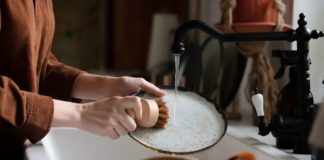
One of the biggest temptations for an avid gardener is browsing online. And not just browsing anywhere, but on gardening websites and heirloom seed dealer pages. How can one resist all of those alluring descriptions and promises of great growth?
It’s not easy. But before you go and blow your whole tax return money on seeds through online stores, you need to do a little planning and a little bit of sleuthing. Not every seed dealer online is reputable. Nor will you need all 128 seed packets in your shopping cart. Unless of course, you have acres of unplanted land. So, with a little bit of help, you can control your spending and not get ripped off in the process.
Sleuthing Duty
Unfortunately, not every website that sells seeds, gardening products and accessories is legitimate. Internet scammers know that gardening is big business, especially in North America, and that they can net even bigger money. Protect your wallet by investigating your website or online store before you make any purchases. Here’s what to look for:
Check their reputation.
Do they belong to the Better Business Bureau (BBB)? If so, are there any complaints lodged against them? The BBB will keep track and monitor all complaints and cases of fraud against a certain person or company. You can search their site for a list of grievances in progress or previously filed against them. If they have none, their record will appear clean. In gardening, clean is positive.
Check for guarantees.
Do they offer a thirty-day, sixty day or other warranty on seeds? Do they guarantee a certain percentage will grow? Do they offer money back if you are not completely satisfied with their product? All of these are important items to check before placing your order. That way, if a problem does arise and you want your money back, you know exactly what the policy is and how to go about doing it.
Check for references and referrals.
A great website will post referrals from satisfied customers. If they do not, send an email to the company, ask for several, and investigate on your own. If they still refuse to give out referrals, they might not have any. Companies usually throw out people who will give them a great review will little asking, so their hesitation may be a red flag. Proceed with caution, if at all, with this company.
Compare prices.
The cheapest isn’t always the best, but neither is the most expensive. When you are comparing prices, you not only need to check the seed prices, but what the shipping charges will be too. If shipping is outrageous, see if there is a local nursery or greenhouse that also carries that brand to save you on shipping charges.
Planning
You’ve done your sleuthing duties and the site has passed inspection, so now it’s time to plan. In the dead of winter, there is nothing more fun than picturing your glorious flower or vegetable garden. The problem usually is though, that our imagination is bigger than our checkbook, or the garden for that matter. All of those brightly colored pictures and vivid descriptions makes us want to do nothing more than buy, buy buy. But, you must plan first, buy second.
Draw your garden plans.
Measure the area you will be plating. Sketch out what plants, flowers and seeds you want to go where. Be reasonable with your measuring and don’t crowd stuff in. Overcrowding will cause your seedlings to not prosper, which will result in lost money for you in the long run. Order what you can feasible fit in your plans.
Lay out what you need vs. what you want to try.
It’s OK to get a little extra. After all, you never know when a bare patch of garden may open up. However, if you have a 20 x 10 foot garden, you know that you can’t plant 100 pumpkin seeds. They will sprout every which way and over top of each other, smothering each other and dying. Waste of money. If you want to try a new variety in addition to what normally fits, it’s OK too. Weed out some weaker seedlings and let the new trials grow.
Buy only what will reasonably fit in your garden THIS year.
Even though we know we shouldn’t over buy seeds, we do. We can use them from year to year, but their success rate is much lower after a year goes by. Professionals recommend buying and planting for one year at a time. No matter how tempted we are by a pretty flower, if the space is all used up in the ground, it’s all used up. There is no point in buying that pretty flower if it will just sit in a drawer for a year.
Lastly, to find out where to get the best seeds online, ask a fellow gardener. Gardening forums and chat rooms are full of people eager to give advice on seeds. After all, what else does a gardener like to talk about! Get online and start planning your seed buying adventure.





































